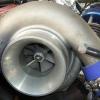True Cam Measurement (measurement Point)
Announcements
-
Similar Content
-
Latest Posts
-
By soviet_merlin · Posted
Hmpf, won't be able to make it after all unfortunately. Next time. -
Good to see your rotors appear as rusty as mine 🤪
-
Took it for a drive to do some logs, I’m pretty sure my voltage issues and electrical noise issues are gone, I’ve sent a log to Adam and am waiting to hear back with confirmation att.K23U9eHyiEJxixH6y1__GQfuqK0EgIoDgQFTs9G8x_w.mp4 idle video from that day just because
-
Went looking at mine, reading off the tyre, presumably these are 1st week of 2003. Still hold air (I haven't had to pump them up in over 12 months!) I couldn't quickly find the date on the front tyres, they were fitted around 2008 to the rims, so probably not quite as old, but they have a lot more dry rot cracks in them. Still hold air.
-
I am now intrigued to go check the dates on the tyres on my Skyline... We need a game of who has the oldest tyre still holding a car up, and successfully holding air (for longer than a 2 weeks I feel is successful air holding). I feel your tyres may be beating mine
-








Recommended Posts
Create an account or sign in to comment
You need to be a member in order to leave a comment
Create an account
Sign up for a new account in our community. It's easy!
Register a new accountSign in
Already have an account? Sign in here.
Sign In Now